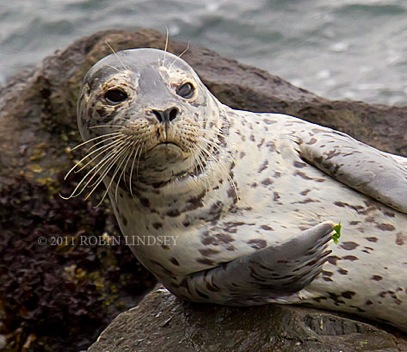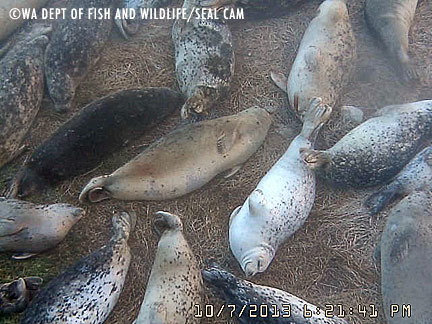vibrissae
Finally - a chubby seal pup to lift volunteers' spirits
Oct/12/13 10:23 PM
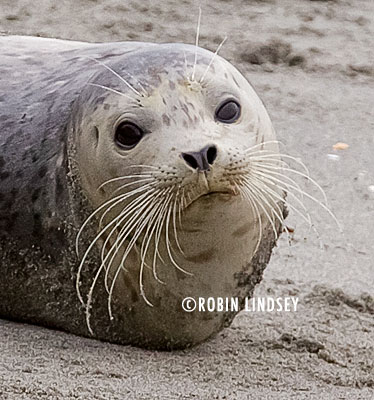
Tiger shows off a magnificent set of whiskers which he will shed next year during his first molt. Since newborn harbor seal pups shed a long and wavy white lanugo coat inside the womb (unless born prematurely), he will not be molting his new spotted fur until next season. However, once a pup reaches a year old, he will shed all his fur and whiskers (called vibrissae) annually over a period of one-two months immediately following breeding season. It takes many months for the whiskers to reach full length again. Seals do use their vibrissae to help them locate and identify prey by sensing motion, but during the very uncomfortable molt they tend to stay onshore for the most part and rely on fat storage for energy. This is why it is critical for seals to bulk up before the late fall and winter months since their weight will drop during the molt.
Seal pups on shore briefly today and others hanging around
Oct/11/13 09:47 PM
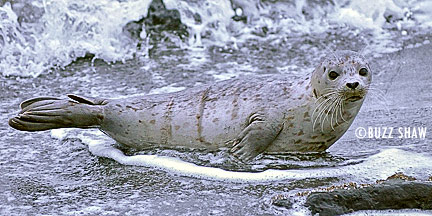
Later in the afternoon, 4 pups were observed foraging along the shoreline, but none that we know of came ashore. A pup was also sighted briefly on the protected beach at Jack Block Park. Perhaps the pups are resting at night or in locations that are less visible. The good news is, however, that we have pups still hanging around West Seattle and that they seem to be actively feeding. In the photo you can see Tiger’s long whiskers which detect vibrations from prey in the water. A recent study showed that the highly sensitive vibrissae contain thousands of nerves which enable a seal not only to locate prey, but determine size and species. This is why harbor seals are very effective hunters even at night or in deep, dark waters.
All of the harbor seal pups in South Puget Sound are now fully weaned. Almost all of the youngsters have left the relative safety of the rookeries to venture off on their own - and area haul-outs are full of grumpy adult seals, molting their coats and spending extended time on shore and less time feeding. While the molting process of harbor seals is not as grueling as the “catastrophic molt” of elephant seals, it is still a very trying time, particularly as winter months approach. Females who expended all of their resources to nurse pups for 4-6 weeks now face the additional physical stress of the molt. Thanks to WDFW-MMI for providing this seal cam photo of a freshly molted seal with a smooth new coat along with others who are still molting. Don’t forget to check out the WDFW seal cam webpage for a real-time look at a harbor seal haul-out and lots of informative articles and videos.
Haul-outs this time of year are not a welcoming place for new “weaners” to linger. All the more reason we need to offer them sanctuary on our urban beaches.
Wiser pups choose safer haulouts
Nov/01/11 07:49 PM
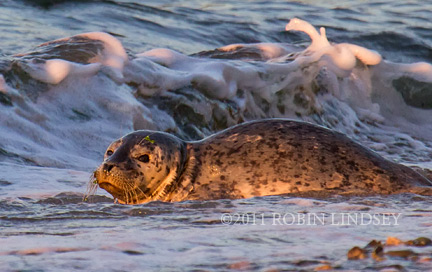
New pup Joy spent Friday in the rain on a private beach south of Alki, while another pup slept safely on a platform offshore. Homeowners kept a watchful eye on the pup until she returned to the Sound late in the afternoon. We have responded to reports of two additional pups hauling out on private beaches stretching as far south as Brace Point, where many homeowners have voiced concerns about off leash dogs.
